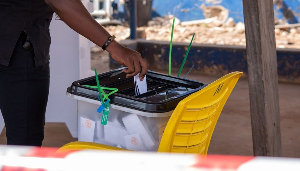Rising interest rates in Ghana is stoking cost of borrowing and forcing businesses to go bankrupt, research conducted by an international organisation has stated.
Ghana is said to have one of the highest lending rates to the world, placing second in the latest ranking released by Trading Economics, a development which has been identified as a disincentive for the business community.
The global economics research entity placed the lending rate of banks in the West African country to be around 26 per cent, but that of microfinance institutions are pegged at about 70 per cent. Malawi rank first in the world with the interest rates of 27 percent as at March 2016.
Trading Economics provides its users with accurate information for 196 countries including historical data for more than 300.000 economic indicators, exchange rates, stock market indexes, government bond yields and commodity prices.
“The prevailing high lending rates in the country is stifling investments, the development of the private sector and economic growth in general,” Jorge Kappor, an Indian delegate of the just ended 2016 World Bank/IMF Spring Meetings in Washington DC, USA told Business Day in an interview.
High-interest rate had consistently been cited by the world competitive index reports, as well as in surveys by the Association of Ghana Industries as one of the major obstacles to doing business in the country.
Contributing, Dr. Victorin Schneidman, who is an Economist with the World Bank said: "the need for a more effective regulation on interest rates by the Central Bank as a way of reducing the high costs of credit is paramount.”
The high lending rates in Ghana, in spite of historically low rates worldwide, are of monumental national importance due to its implications for the development of the private sector.
Some analysts blame competitive government borrowing as a major cause of high lending rates in the country. The country's high budget deficit for a long time, which is increased during election years, is financed by borrowing both domestically and internationally. This has driven up the rates for Treasury Bills, which has become a de facto- benchmark for banks’ rates.
Also, government is forced to pay relatively high- interest rates, which in turn forces the private sector to pay high rates for credit.
In addition, high costs in the banking industry covering operational costs, energy costs due to the current energy crisis, as well as structural inefficiencies, high borrower risks emanating from inadequate collateral, lack of credit referencing, un-bankable projects and general macro-economic instability have contributed to the high rates.
Internationally, the depreciation of the cedi and high-interest rate demand from foreign investors on bonds have also been contributory factors. In order to address these issues, government must restrain its borrowing by reducing the budget deficits.
Other remedies include increasing the efficiency of banks' operational costs, addressing borrower risks and, most importantly, reinforcing financial regulation in Ghana.
Interest rates around the world, both short term and long term, are exceptionally low these days. The United States of America government can borrow for 10 years at a rate of about 1.9%, and for 30 years at about 2.5%.
Rates in other industrial countries are even lower. For example, the yield on 10-year government bonds is now around 0.2% in Germany, 0.3% in Japan and 1.6% in the United Kingdom. In Switzerland, the 10-year yield is currently slightly negative, meaning that lenders must pay the Swiss government to hold their money.
The interest rates paid by businesses and households are relatively higher, primarily because of credit risk, but are still very low on historical basis. All else equal, investors demand higher yields when inflation is high to compensate them for the declining purchasing power.
But yields on inflation-protected bonds are also very low today. The real or inflation-adjusted return on lending to the U.S. government for five years is currently about minus 0.1%.
Click to view details



Business News of Monday, 25 April 2016
Source: Business Day

















